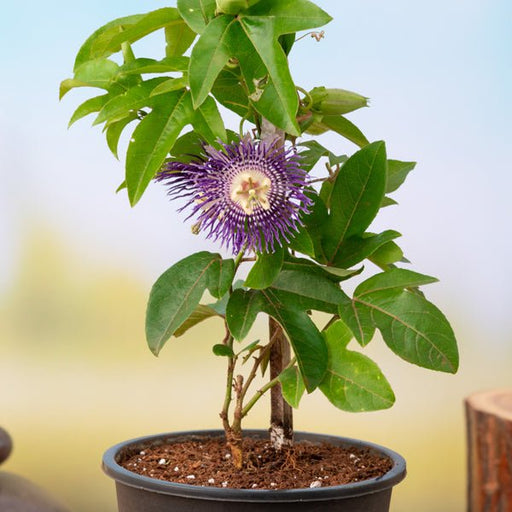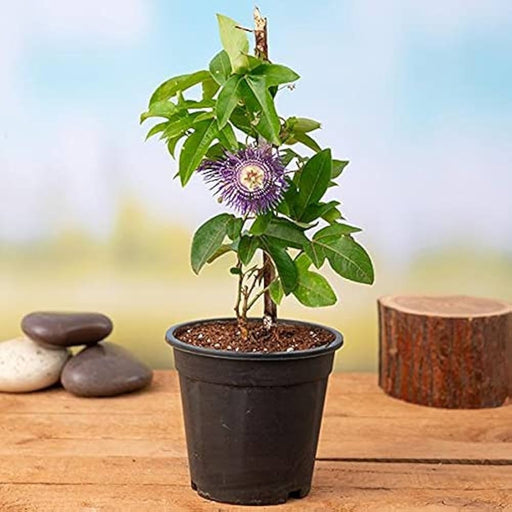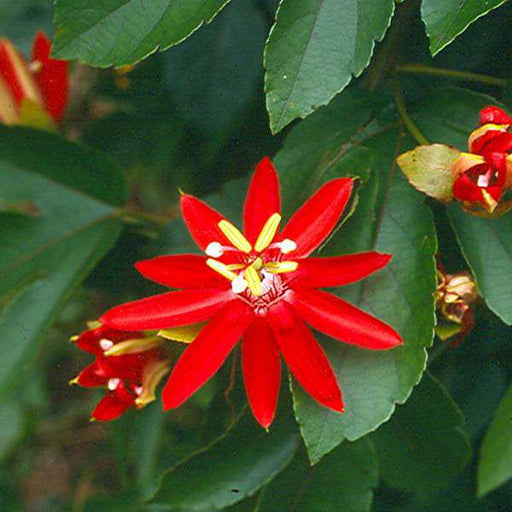Passiflora Plant Care
Proper care for Passiflora plants involves providing adequate water, sunlight, and nutrients, as well as regular pruning and monitoring for pests and diseases. These tropical plants require a bit of extra attention, but their stunning blooms are worth the effort.
Passiflora Plant Varieties
There are many varieties of Passiflora plants, each with its own unique characteristics and growing requirements. From the classic Passionflower to the more exotic Banana Passionfruit, there's a Passiflora for every garden.
Passiflora Plant Colors
Passiflora plants come in a range of colors, including white, pink, purple, red, and blue, as well as bi-colored and multi-colored varieties. Choosing the right colors can help create a stunning garden display.
Passiflora Plant Symbolism
Passiflora plants are often associated with religious symbolism, as the intricate structure of their flowers has been said to represent the crown of thorns and other elements of the Passion of Christ.
Passiflora Plant Propagation
Passiflora plants can be propagated through stem cuttings, layering, or seed propagation. It's important to provide the right growing conditions and monitor for pests and diseases.
Passiflora Plant Pollination
Passiflora plants require specific pollinators, such as certain species of bees and butterflies, to ensure successful pollination and fruit set. Understanding the pollination process can help you better care for your Passiflora plants.
Passiflora Plant Fruit
Passiflora plants produce edible fruit, including the classic Passionfruit, which can be used in a range of culinary applications. It's important to properly ripen and prepare the fruit before consuming.
Passiflora Plant Medicinal Uses
Passiflora plants have been used for their medicinal properties for centuries, with potential benefits for sleep, anxiety, and pain relief. However, it's important to consult a healthcare professional before using Passiflora as a supplement or alternative treatment.
Passiflora Plant Garden Design
Passiflora plants can be used in a range of garden designs, from trellises and fences to hanging baskets and mixed flower beds. They offer versatility in terms of color, size, and growing requirements.
Passiflora Plant Sun Requirements
Passiflora plants require full sunlight to thrive, with at least six hours of direct sunlight per day. They may not bloom as well in shady or partially shaded areas.
Passiflora Plant Soil Requirements
Passiflora plants require well-draining soil that is rich in organic matter. The soil should be kept moist but not waterlogged, as excess moisture can lead to root rot and other issues.
Passiflora Plant Watering
Passiflora plants require regular watering, with the soil kept moist but not waterlogged. Watering should be done at the base of the plant to prevent damage to the leaves and flowers.
Passiflora Plant Fertilizing
Fertilizing Passiflora plants can help promote healthy growth and abundant blooms. Use a balanced fertilizer formulated for flowering plants, and follow the manufacturer's instructions for application.
Passiflora Plant Pests and Diseases
Common pests and diseases that can affect Passiflora plants include aphids, spider mites, and fungal diseases like powdery mildew. Regular monitoring and proper care can help prevent and treat these issues.
Passiflora Plant Companion Plants
Passiflora plants make excellent companion plants, providing vibrant color and attracting beneficial pollinators to the garden. Good companion plants for Passiflora include other flowering plants, herbs, and vegetables.
Passiflora Plant Container Gardening
Passiflora plants can be grown in containers, making them a great choice for small gardens and balconies. It's important to choose the right size container and provide adequate drainage and support for the plant.
Passiflora Plant Winter Care
Passiflora plants may require additional care during the winter months, particularly in areas with cold temperatures. Mulching and protecting the roots can help ensure the plant survives the winter and blooms again in the spring.
Passiflora Plant Pruning
Pruning Passiflora plants can help promote healthy growth and abundant blooms, as well as control the size and shape of the plant. It's important to prune at the right time and use proper techniques to avoid damaging the plant.
Passiflora Plant Trellis Design
Trellises are a popular way to support and display Passiflora plants, with a range of designs available to suit different garden styles. Choosing the right trellis can help enhance the beauty of the plant and make it easier to care for.
Passiflora Plant Cultural Significance
Passiflora plants have cultural significance in many parts of the world, particularly in Latin America, where they are associated with religion and folklore. Learning about the cultural significance of Passiflora can deepen your appreciation for these stunning plants.

















































